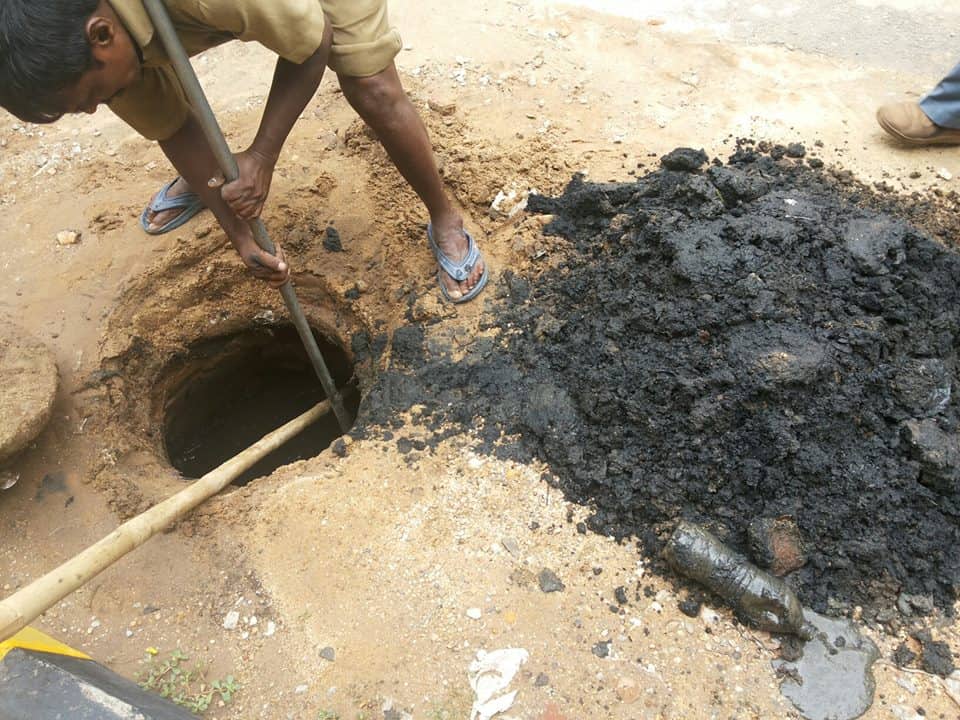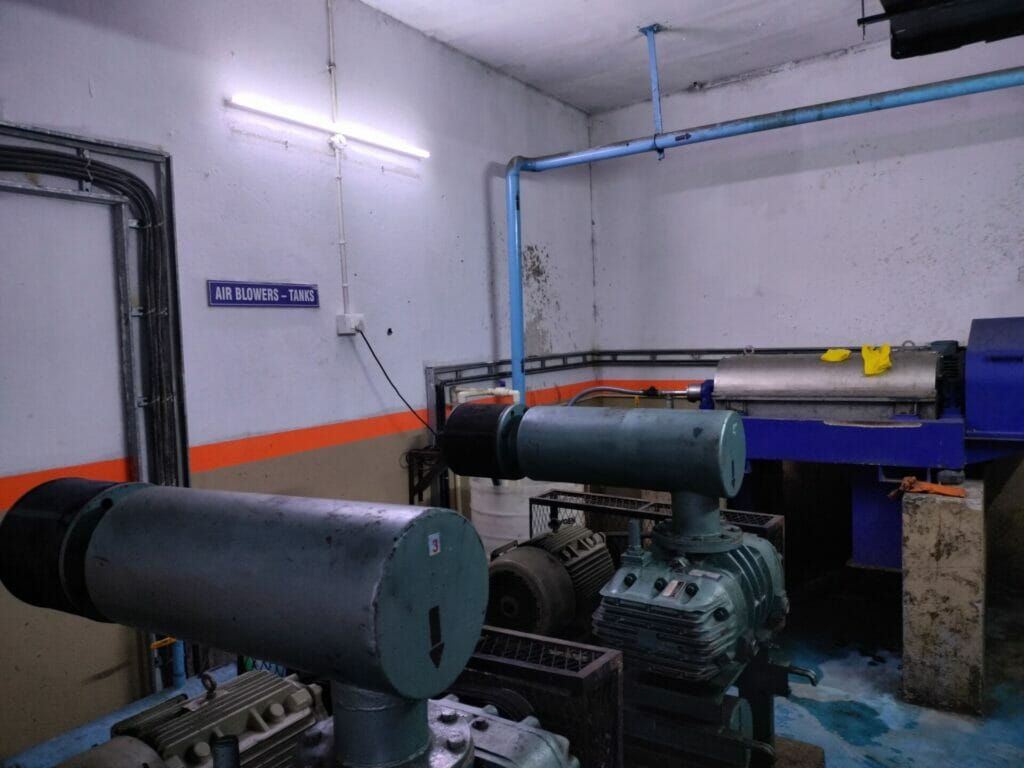Even though manual scavenging was officially banned in 1993, it continues in the city. This is due to the increasing number of sewage treatment plants (STPs) and a lack of awareness about their operation and maintenance.
In Part 1 of this series, we looked at the absence of data and organisation within the rehabilitation programme for manual scavengers. In this part, we look further into the emergence of a new form of manual scavenging.
In 2018, the Karnataka State Pollution Control Board (KSPCB) amended its guidelines for STPs. It made the installation of STPs mandatory in apartments above 50 units. It also prescribed four accepted technologies, which can be installed in the apartments, commercial units, educational institutions and, township and area development projects with specific requirement parameters for each.
However, the absence of clear specifications regarding operation, maintenance and vendors’ information has raised concerns, not only related to environmental issues but also fundamental questions about basic human rights.
According to the Manual Scavengers Act, Clause (g) of Section 2, a manual scavenger is defined as “a person engaged or employed, at the commencement of this Act or at any time thereafter, by an individual or a local authority or an agency or a contractor, for manually cleaning, carrying, disposing of, or otherwise handling in any manner, human excreta in an insanitary latrine or in an open drain or pit into which the human excreta from the insanitary latrines is disposed of, or on a railway track or in such other spaces or premises, as the Central Government or a State Government may notify, before the excreta fully decomposes in such manner as may be prescribed, and the expression “manual scavenging” shall be construed accordingly.”

In 2020, All India Central Council Trade Unions filed a writ petition in the High Court of Karnataka to include STPs in the Manual Scavengers Act, along with demands for rehabilitation, which is currently pending in court.
“Manual scavenging has taken a new form. Though the traditional form has reduced, STPs are paving the way for institutionalising manual scavenging,” says Maitreyi Krishnan, state committee member of All India Central Council Trade Unions. Since STPs are relatively new, any deaths or injuries resulting from their maintenance pose challenges in being categorised under the Manual Scavengers Act.
Another loophole in the Act arises from the provision that if a person cleans human excreta with a mechanical device and protective gear, it is not considered manual scavenging. In many cases, these devices and protective gear may prove ineffective, leading to severe injuries and even death. This makes it dicey to be claimed under the Act.
“In December 2022, there is another petition against BWSSB where a person was made to use the jetting and sucking machines, with no safety equipment. Because of the force with which the machine moved, and lack of safety measures, training or equipment, it flew back and hit his face and he lost his sight, and subsequently lost his life,” says an advocate on condition of anonymity.
“If we do have STPs, they should be using jetting and sucking machines to clean them. There are several instances where people are made to clean these STPs manually. But the situation is that there should not be any manual scavenging, which is prohibited by law,” says the advocate.
Guidelines for STPs
“We did not have any guidelines for the setup of STPs. Ananth Kodavasal, director of EcoTech, who has more than 30 years of experience dealing with STPs, and I drafted an STP guide, which the Karnataka State Pollution Control Board later published on their website,” says Nagesh Aras, a civic activist. Due to a lack of accountability, the operation and maintenance of STPs become more challenging in apartment settings in comparison to educational institutions, hospitals, and commercial buildings. In addition, the lack of clarity on the guidelines from the pollution control board makes them less accountable to address the concern.

The Water (Prevention and Control of Pollution) Act, 1974 specifies that when there is a new model of STP, KSPCB should check its design, calculations and other specific features and approve them, but that is never done. “We offered to make the procedure STP-wise, with separate processors, the data collection and provide a format where you simply have to put the number of units in the apartment in one column and it will give you the STP calculations next to it. But this proposal was neither accepted nor rejected,” says Nagesh.
Loose guidelines have resulted in designers formulating their own theories to make STPs, while agencies will promote their particular designs, regardless of their suitability for apartment conditions. This has become one of the leading causes of the failure of most STPs in Bengaluru apartments.
“It’s a combination of experts’ jobs and apartment’s management. The designers should cater to the specific needs of the apartment, which is rarely done in most Bengaluru STPs,” says Hareesh Shivaraman, a member of the Bengaluru Apartment Federation (BAF) Governing Council, who leads the legal and statutory team.
Read more: Bengaluru has most manual scavengers in Karnataka, rehab a distant dream
The approved technologies mentioned by the KSPCB are:
- Activated Sludge Process(ASP) only in the case where the sewage generated is 500 KL and above
- Sequential Batch Reactor(SBR)
- Membrane Bio Reactor (MBR)
- Moving Bed Bio Reactor (MBBR) / Fluidized Aerobic Bed rector (FAB)
While there is a note below stating that when new technologies are brought to the notice of the Board, the technical committee is to review it and decide if it can be adopted, no changes have been implemented so far.
“KSPCB should not make things complicated. They should just focus on the output, which is clearly defined with parameters. What they mandate should be made compulsory, which is the parameters, and what they should encourage is the research on STP models, which they can publish on their official sites for people to have options to consider, not provide ‘approved technologies,’ as it becomes limiting for new models,” says Srikanth Narasimhan, founder of Bengaluru Navanirmana Party.
Operation and maintenance
Under the The Water (Prevention and Control of Pollution) Act, 1974, STP installation requires three types of permission from KSPCB.
- Consent for Establishment (CFE) before the start of the project
- Consent for Operation (CFO) before beginning operation of the project
- Consent for Expansion (CFEx) before expanding the operation of the process
Additionally CFO has to be renewed periodically to keep the license of the STP.
“STPs are already built during the construction phase and the apartment people have no say. We just come and occupy the houses. We have got the white elephant, we have to maintain it alone,” says Satish Mallya, a member of the BAF Governing Council, who takes care of technical advisory.
“Maintenance of STPs is a risky process. The phase mostly comes once a year and can last for a week. All tanks have to be emptied and there might be a need to send people down there. And sometimes gases fill up if the ventilation is not done right and might cost lives,” says Nagesh. He adds that sucking can be done, but when the sludge gets solidified it requires manual intervention.
“This is a criminal offence under Manual Scavenging Act and Atrocities Act,” says the advocate.

Observing and understanding the operation of STPs is crucial. “In our apartment, we have two blowers to switch from one another to not overwork them beyond their mentioned time. We have spares for all parts to make the STPs run longer,” says Shivaraman.
Big STPs can be automated completely, however, smaller STPs have to be managed manually. “While pumping the sludge out, the ‘STP people’ will clean it and if they need any help, they will call any ‘local guy’ for assistance,” adds Shivaraman. If things go haywire, these “STP people” and the “local guy” will have to pay a bulkier price.
Automation is being integrated into newer apartments; however, the older apartments are struggling with manual maintenance, which is costly for the apartment residents and risks the lives of those involved in cleaning the STPs.
The majority of the cost of maintaining STPs is manpower, as it requires a technician to attend to it at all times. “Ideally there should be a person in charge for all three shifts. But the cost of maintenance for apartments below 300 KLD is very high, i.e., Rs. 7 paisa per kilo litre, whereas for a 1,000 KLD apartment and above, it comes down to Rs 3 paisa per kilo litre. Hence, in smaller apartments they keep no one on the night shift to cut costs,” says Satish.
While some say that the member committees of the apartments are in charge of maintaining the STPs, some have given this responsibility to private vendors/agencies with annual maintenance contracts (AMC).
The newer apartments are now each holding one agency accountable for the installation and maintenance of their STPs. However, the older apartments are struggling with the same as the designers had set up built-in STPs and washed their hands off all responsibility, leaving the apartment residents to continue the maintenance.
The apartment residents believe that KSPCB can finalise a list of blacklisted agencies to avoid inefficient services for STPs. On the other hand, the service providers believe that it is the responsibility of the apartment federation to come up with a list, since they have lists for other services in the building, such as lift maintenance, rainwater harvesting etc.
“Every job has its risks, these are very few cases”
“There is an inherent risk to any building. So, entering the STP tanks has its risks, but they should be provided with protective gear,” says Nagesh. But the question of who should be providing these protective gear has no clear answer.
“It’s not something that happens regularly, it’s just that some agencies don’t do a very good job,” says Narasimhan.
However, the number of deaths does not reflect the extent to which this form of manual scavenging is practiced. It is the ease with which the “local guy” is called, the carelessness with which protective gear is given, and the ignorance of all parties involved that costs lives and allows this caste- based discriminatory role to thrive.